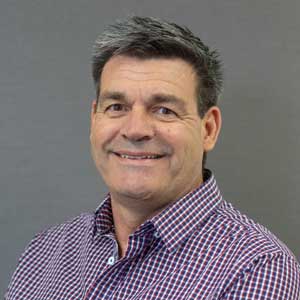 Garry MacPhail, Business Manager – Geospatial, Aptella discusses the evolution of technology and its benefits for the surveying profession.
Garry MacPhail, Business Manager – Geospatial, Aptella discusses the evolution of technology and its benefits for the surveying profession.
After completing surveying college, Garry MacPhail, Business Manager – Geospatial, Aptella, discovered that his true passion was technology and how it could assist the surveying profession in automating a task or improving workflows. This passion led him into a career selling innovative equipment into the marketplace.
“My biggest passion is automating a task and making a difference to the surveyor’s workflow. This has been the most important thing for me throughout my career,” said Mr MacPhail.
“It’s that continuous improvement and refining Aptella’ products to give better productivity and help surveyors do their tasks better.”
Over the span of his career, Mr MacPhail has seen the technology available to the surveying profession evolve dramatically, from the electronic distance meter (EDM) up to present day with RPAS technology allowing for mass data collection.
As Mr MacPhail explained, at the start of his career providing technology to the surveying profession, EDM was a game changer, but in the early 80s EDM evolved and out of the combination of the theodolite and some electronic angles the total station was born.
“That was probably the biggest change to our market,” said Mr MacPhail.
“Then GPS came along in the late 90s/early 2000s as a tool for surveyors and quickly became the standard kit along with a total station. It sped up the process of doing a pick up or in inaccessible spots, you didn’t have to traverse in, which meant we had a greater range to work in.”
Now with remotely piloted aircraft systems (RPAS) surveyors have the technology to collect a massive amount of points. This point cloud data along with improved computing power enables us to generate a much better 3D model. Surveyors deliverable is much cleaner, we can give a 3D model that people can rotate, spin around and see exactly what it is and where they are in relation to what they’re building,” said Mr MacPhail.
The use of RPAS has revolutionised some of the tasks in the surveying field, this technology makes it possible to do a stockpile volume without anyone having to go near it, which increases safety for the surveyor. It also allows the surveyor to get a good view of the project from the air, giving them a much clearer view of the overall progress of the project.
“RPAS has changed how surveyors look at surveys,” said Mr MacPhail.
Surveyors can also get better coverage when doing surveys in areas that are heavily tree-ed by attaching LiDAR (Light Detection and Ranging) remote sensing technology to an RPAS.
Mr MacPhail encouraged the surveying community to embrace technology and innovation and to own the data.
“Surveyors techniques haven’t changed over the years and the basic principles still exist. Whatever technology we provide that can make the surveyor’s job a lot easier, well that’s just going to be to the surveyor’s benefit,” said Mr MacPhail.
“At the end of the day the surveyors own the data, will always own the data and are the best profession to understand that. That’s what my message would be: Don’t be scared of new technology, go with it and own it,” said Mr MacPhail.

Kami membangun bisnis dengan memberikan solusi teknologi konstruksi untuk meningkatkan produktivitas pelanggan kami.
PT Aptella Solusi Teknologi
NPWP: 70.620.776.8.017.000
2024 Aptella | NPWP: 70.620.776.8.017.000 | Terms and Conditions | Privacy Policy